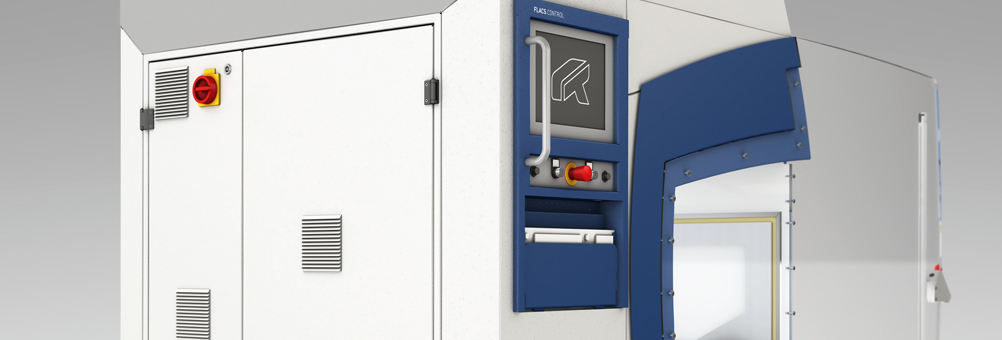Laser-cutting station
FLACS SCAN 300/600
Processing very precise contours // Fast processing speeds // Cutting, marking, perforation and machining

A standard laser station for cost-effective processing of plastic components. This flexible system provides an interesting alternative to
conventional stamping. By minimizing the mass being moved (the laser beam is diverted using two very lightweight mirrors), it
allows extremely precise contours to be created at very high speeds. In addition to cutting components, you can also mark, perforate
and machine materials. The level of precision is up to +/- 0.02 mm, depending on the application.

LASERS
This system concept uses CO2 lasers with a laser power
between 60 and 300 W. The laser is mounted on an
adjustment plate and equipped with a completely sealed
beam guidance system, which is kept free from dust
through overload pressure.


CONTROL PANEL
The system is completely controlled through the control panel, with a color touch screen display. A keypad with a touch area allows the system to be easily programmed for your specific needs. By default, the control panel is mounted out- side the system, on the protective covering. However, it can be moved de- pending on the application.

SYSTEM VERSIONS
Turntable version
The turntable design allows parts to be replaced in less than 1 second. With the turntable process, components can be processed while a worker is replacing the parts. The maximum component size is 600 x 400 x 300 mm.


Robot loading version
For automatic loading, there is a version that is completely open in front. A linear or 6-axis robot can flexibly load the components
into the station from the front. The robot can reposition the components several times in order to scan them from multiple sides.
Sliding table version
For manual loading of small and compact components, there is also a sliding table version of our FLACS.SCAN 100. The sliding table
version can be adjusted for various tasks and components. The sliding table is available in a pneumatic and a manual design.
Rotating table with swivel axis option.
With the swivel axis option, the laser station is expanded by a rotating table, which reverse turns 0-180°. Two swivel axes are built on
the rotating table, and they can be freely programmed to turn the components along the longitudinal axis +/- 120°.






